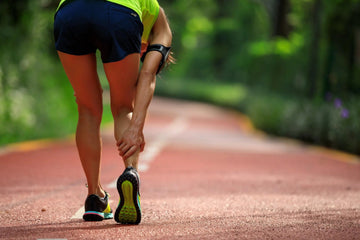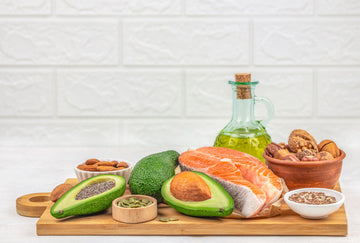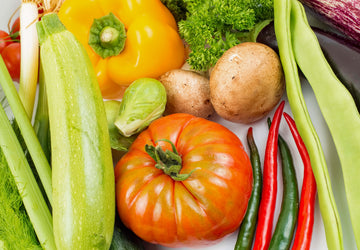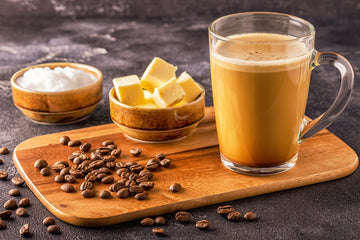Calf cramps are an unpleasant experience that many people - whether they're athletes or not - have experienced. Suddenly, the muscle contracts painfully and feels like it's knotted. These cramps often occur at night or during physical activity. But what exactly causes calf cramps and how can you prevent them? In this article, you'll learn the most common causes of calf cramps and get practical tips to avoid these painful muscle cramps.
What are calf cramps?
A calf cramp occurs when the muscles in the calf suddenly contract involuntarily and strongly. This can last for a few seconds to several minutes. During a cramp, the affected muscle is hard and painful, which often leads to restricted movement. These cramps can occur in various situations, such as:
• At night while sleeping (nighttime calf cramps)
• During or after intense physical activity
• During rest periods after a long day on your feet
Causes of calf cramps
Calf cramps can be caused by a variety of factors. The most common causes include:
1. Lack of fluids (dehydration)
If the body is not adequately hydrated, electrolyte imbalances can occur, which can impair muscle function and cause cramps. Electrolytes such as sodium, potassium and magnesium are essential for muscle contraction and relaxation.
2. Electrolyte deficiency
In addition to a lack of fluids, an imbalance of important minerals such as potassium, magnesium, sodium or calcium can also lead to calf cramps. These minerals play a crucial role in controlling muscle contractions. Athletes in particular lose a lot of electrolytes through sweating, which increases the risk of muscle cramps.
3. Overexertion or muscle fatigue
Intense or unusual physical activity can overload the muscles and lead to cramps. This is especially true for sports that place a lot of strain on the calves, such as running, cycling or hiking. A sudden increase in training intensity or too little recovery between sessions can also encourage cramps.
4. Circulatory disorders
Poor circulation, especially in the legs, can impair the supply of oxygen and nutrients to the muscles, increasing the risk of cramps. This is often a common cause of nighttime leg cramps in the elderly or those with vascular disease.
5. Lack of stretching or lack of movement
Sitting or standing in the same position for long periods of time can cause muscles to shorten and cramp. A lack of stretching after exercise can also lead to muscle shortening and thus calf cramps.
Tips for preventing calf cramps
Fortunately, there are many effective steps you can take to prevent or relieve calf cramps. Here are some tried-and-tested tips:
1. Drink enough fluids
Drink plenty of water regularly throughout the day to avoid dehydration. You should especially drink more fluids when exercising or on hot days. Sports drinks with electrolytes can help to restore electrolyte levels after intensive training sessions.
2. Replenish electrolytes
Make sure to enrich your diet with foods rich in electrolytes. Here are some examples:
• Potassium : bananas, avocados, potatoes, spinach
• Magnesium : nuts, seeds, green leafy vegetables, whole grains
• Calcium : dairy products, almonds, kale
• Sodium : Particularly important in case of heavy sweating, can be balanced through food or sports drinks.
3. Regular stretching
Stretching can help keep muscles flexible and supple, which reduces the risk of cramps. Stretching is particularly effective before and after exercise, as well as before going to bed if you tend to get nighttime calf cramps. A simple stretching exercise for the calf muscles:
•Stand about an arm's length away from a wall.
•Lean with your hands against the wall, one leg stretched back, the other bent.
•Press the heel of the stretched leg into the ground and feel the stretch in the calf.
•Hold the position for 20 to 30 seconds and then switch legs.
4. Slow warm-up and cool-down
Avoid starting your workout without warming up or stopping suddenly. A slow warm-up increases blood flow to the muscles and prepares them for the strain. It is just as important to wind down gently after training and relax the muscles with stretching exercises.
5. Appropriate training load
Overexertion can cause calf cramps, so it's important to increase your training gradually. Make sure you give your body enough rest and take enough breaks between intense sessions.
6. Wear the right shoes
Make sure your shoes fit well and provide adequate foot support, especially if you spend a lot of time standing, walking or playing sports. Poorly fitting shoes can put strain on your muscles and encourage cramps.
7. Massage and heat treatment
If you already have a calf cramp, massage and heat can help relax the muscles. Place a warm compress on the affected area or gently massage the muscle to promote circulation and relieve tension.
What to do if you have a calf cramp?
If you have an acute calf cramp, it is important to act quickly to relieve the pain and relieve the cramp. Here are some tips that can help:
• Stretching : Try to gently stretch the affected muscle. Extend your leg and pull your toes towards your shin to feel the stretch in your calf.
• Massage : Massage the cramped muscle with your hands or a massager to stimulate blood circulation and relieve the cramp.
• Heat : A warm compress or warm bath can help relax the muscle and relieve pain.
• Walking : When the cramp subsides, you can walk around slowly to promote blood circulation and loosen up the muscle.
Conclusion
Calf cramps can be painful and annoying, but can often be prevented with the right measures. Make sure you drink enough fluids, keep your electrolyte levels in balance and keep your muscles flexible through stretching and targeted exercise. If calf cramps occur regularly despite all precautions, you should see a doctor to clarify possible health causes. With good preparation and the right care, you can effectively avoid calf cramps and get through everyday life and your sporting activities pain-free again.





